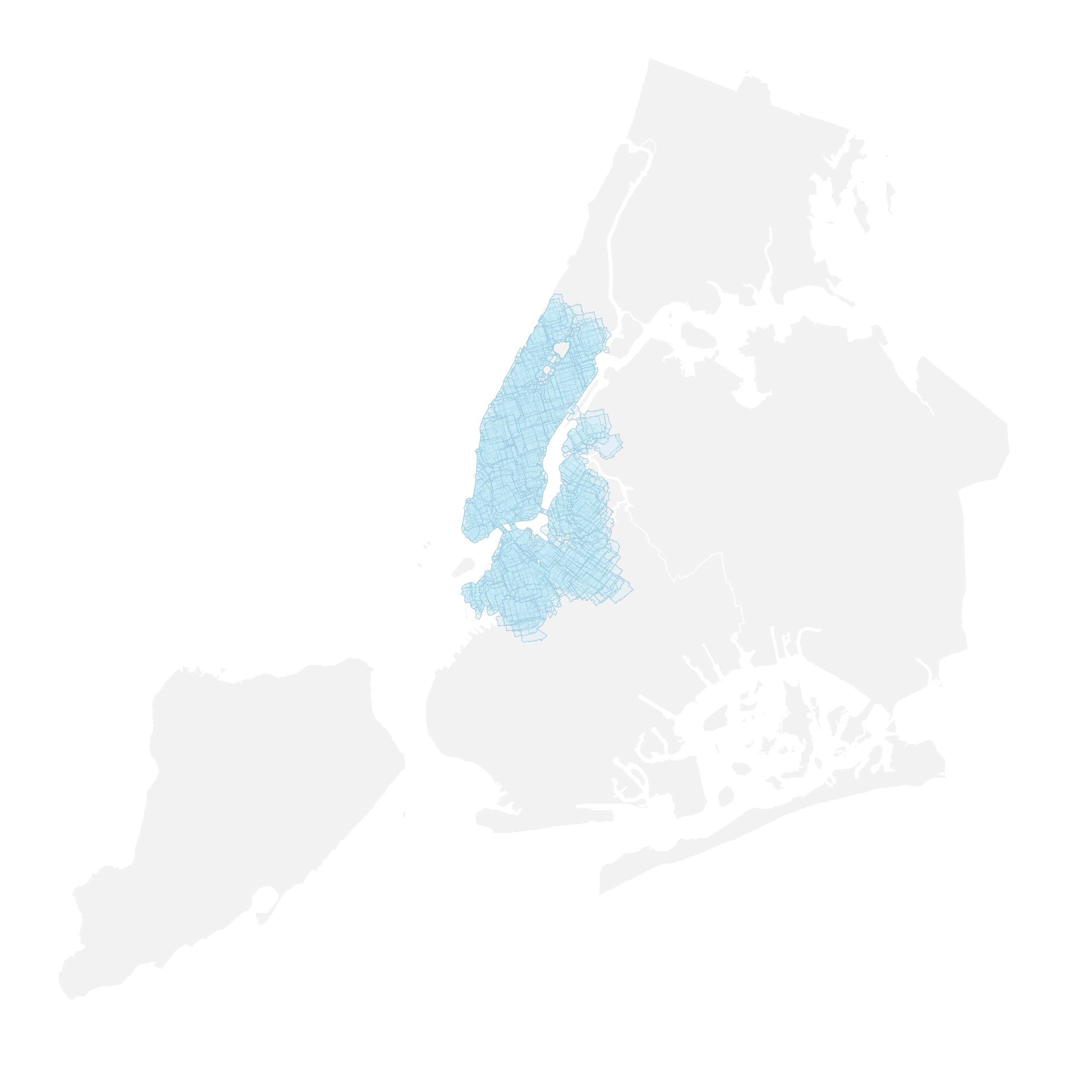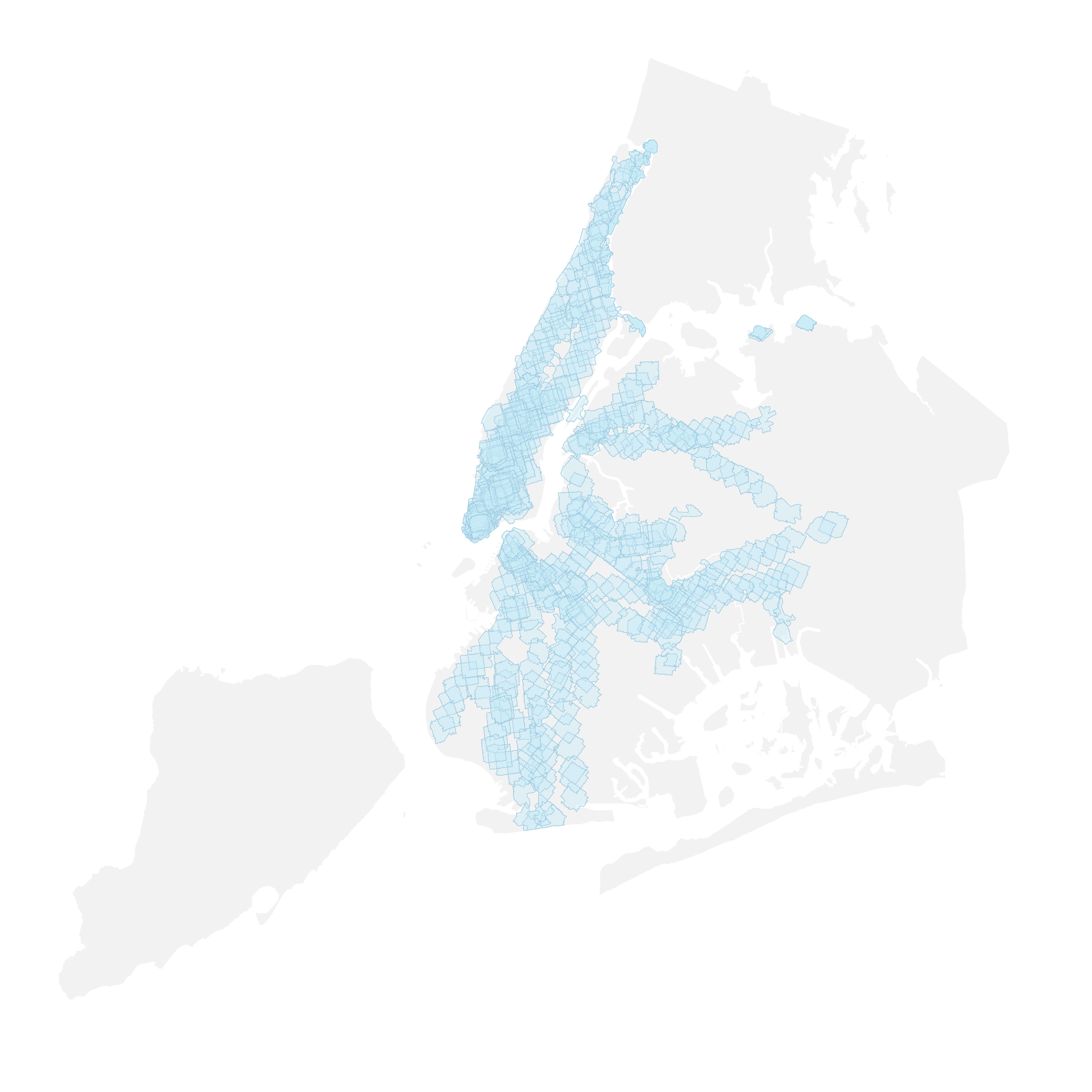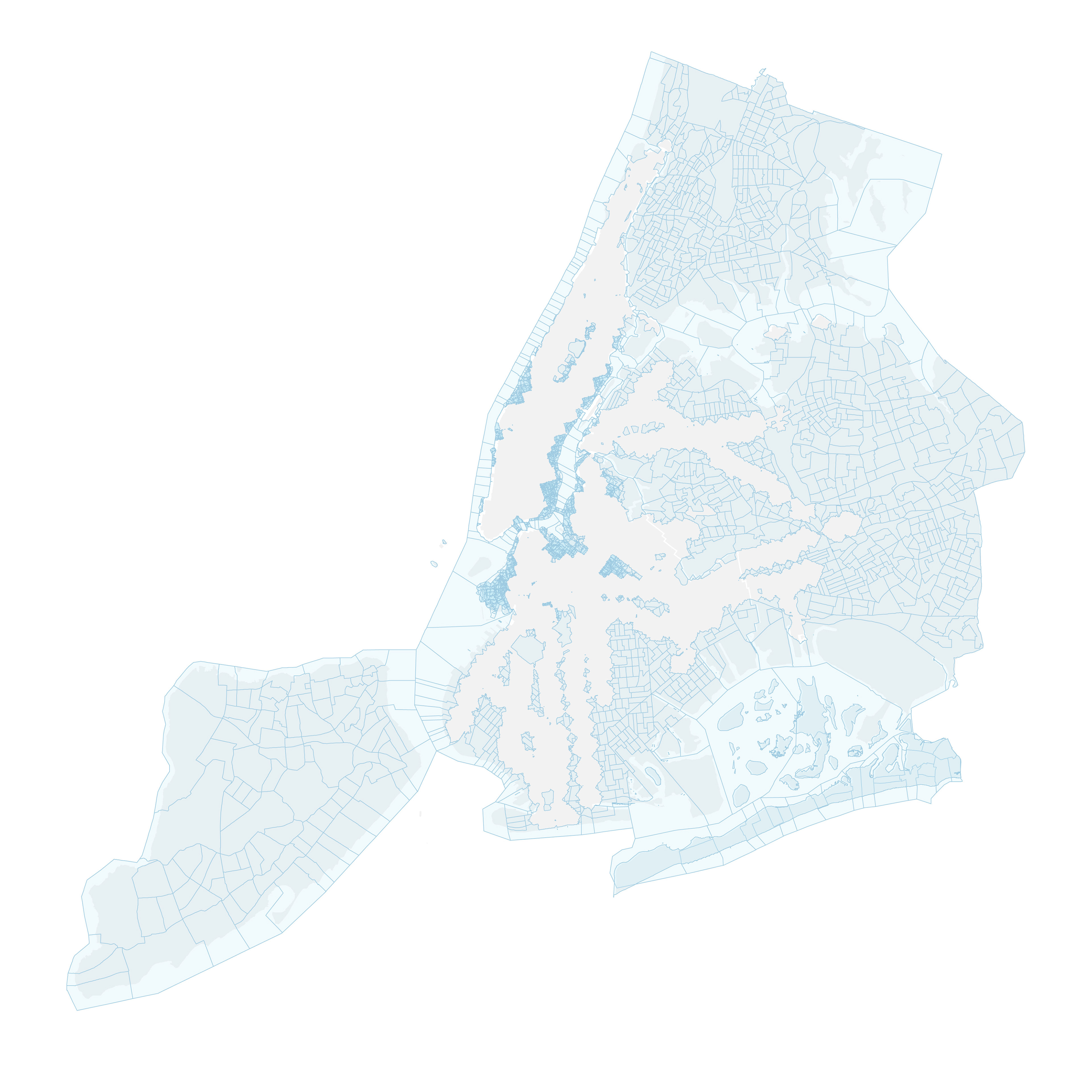This report evaluates the access of New York City residents to the Citi Bike network, as of May 2017, based on metrics of walkability and distance traveled using the subway. This study does not seek to answer questions about Citi Bike’s users, but rather to probe whether Citi Bike’s locations reproduce, exacerbate, or break from existing spatial patterns of inequity. By asking who has access to Citi Bike and what level of access is afforded to different groups of people, this study seeks to analyze Citi Bike’s relationship to people and the spaces they inhabit.
An overview of the existing Citi Bike network revealed that the 615 Citi Bike stations located in Manhattan, Brooklyn and Queens were heavily concentrated in one general area. The large range of walking distances from Citi Bike stations to subway stations indicates that the level of access from Citi Bike stations is not uniform across New York City, and the fact that some Citi Bike stations had no subway stations close to them in the service area supports this notion. When the subway was factored in, however, accessibility to the Citi Bike network increased. The service area of Citi Bike stations contained part or all all of each subway line. 39% of subway stations were within the Citi Bike service area, while a much increased 89% of New York City’s subway stations were accessible from those Citi Bike stations.
The Citi Bike network
Proximity of Citi Bike stations to subway stations
For this research project, access is defined based on three proximity metrics to Citi Bike stations. The first service area of the Citi Bike network encompasses a half-mile from Citi Bike stations, calculated along pedestrian routes. This area roughly translates to a ten minute walking distance. The second service area covers this same ten minute walking distance around subway stations thirty minutes away from Citi Bike stations along NYC's subway lines. The third service area covers the parts of NYC that have no access to Citi Bike through walking and/or taking the subway for 30 minutes. This service area uses census tracts as its base boundary.
Service areas, which intersected with the census tracts, were overlaid on top of each other. To estimate the population in these service areas, a proportional split was performed. A similar methodology was used to calculate demographics in the areas without access to the Citi Bike network.

Immediate access to Citi Bike stations

Access to Citi Bike through the subway system

No access to Citi Bike through either avenue
Analyzing Citi Bike as a bi-modal transportation option illustrates that the system is rather robust, but is not accessible equally across age and race. Minority populations are less likely to have access to Citi Bike than white populations. Younger populations are also more likely to have access, but this is on par with New York City’s relatively young population.
NYC demographics compared to that of the Citi Bike network's immediate service area
NYC demographics compared to that of areas with access to Citi Bike via subway
NYC demographics compared to that of areas with no access to Citi Bike